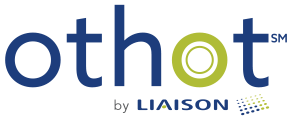Are Your Student Success Strategies Ready for the Next Decade?

Brandi Phillips, Executive Consultant, Student Success Solutions, RNL
Two things seem clear to us.
Focusing on student success before the pandemic was already a challenge, and the students entering college this fall may be the most unique group of students higher education has experienced since the GI Bill brought thousands of returning soldiers to traditional campuses.
Both the students starting college this fall and the GIs had their educational experiences interrupted.
Institutions will have to adapt to meet the needs of this next wave of students—but what do you need to know to do just that?
A Holistic View of Your Students
What do you need to know about your entering (and returning) students to be prepared to meet the needs of the newest members of your community?
Collecting the right institutional and supplemental data opens the opportunity to help more students.
Having a 360-degree view of your students, a holistic understanding of who they are, what their strengths and challenges are, and where they see the need for assistance to make a successful transition to college (or to their second year of college) are essential elements of a comprehensive understanding of your students.
With this holistic perspective, student success leaders can align resources with the needs of their students and embark on what we call “radical personalization” to engage students.
Five Questions to Help You Prepare to Welcome New and Returning Students this Fall
While we know you are just finishing this academic year, here are five questions you need to be able to answer as you turn the page on this year and prepare to welcome your new and returning students in the fall.
-
In our entering class, who needs our attention now?
Summer melt is real and of increasing concern to Enrollment Managers. Who, among your entering class, is less committed to your institution and more likely to “melt away” over the summer? What connections should you be making with your entering students over the summer? -
What resources do we need to be sure to have ready for our entering students?
Aligning institutional resources with the needs of students is more of a priority than ever. How do you know what’s most important to your students, and how are you connecting your newest students with these resources as soon as possible? -
How do I need to prepare faculty and staff to teach, advise, and support our entering students?
In addition to high school grades, SAT/ACT scores (if these are even available), and intended majors—what else is critical for you to know about your students? Motivational, non-cognitive insights into your students tell “the rest of the story.” What are your student’s strengths? Challenges? Specific needs to be successful? -
How can we be more proactive in early identification and early intervention based on risk patterns?
Waiting for an alert to be filed on a student for missing classes or missing assignments is too late. Identifying risk indicators based on motivational assessment can help you be proactive in your outreach to students. Motivational assessment gives you these insights so you can identify and intervene and connect students with resources they want and need. -
What do I need to know about my returning second-year students?
All too often, we assume that returning second-year students “have it all figured out.” Our data on second-year students suggest otherwise. Who is thinking about changing their majors? Who is dealing with transition issues? What assistance do your second-year students want as they return to your campuses? And with the impact of this past year, was social development disrupted?
You Need Data to Answer the Questions
Knowing the right questions to ask is key but having the right data to answer the questions is the first step to getting insight about your students. Monitoring academic profiles and success alone can’t answer all these questions.
You need to be diligent about collecting data and monitor activity around motivational and behavioral drivers, social interaction, faculty and staff engagement, and personal involvement with campus life. Therein lies the data that will help you understand your students better and enable you to support their success.
Along with the data, having the tools to help you identify, analyze, and act is the next step. That’s also the topic of our next joint Othot and RNL post.
Read about the tools needed to support student success on your campus.
We invite you to check us out:
Zach Varga, Vice President of Partner Success and Business Partnerships at Othot, co-authored the blog.

Brandi Phillips, Executive Consultant, Student Success Solutions, RNL



